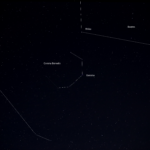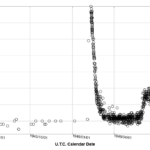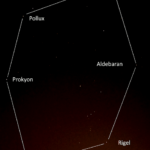For as long as people have been looking at the sky, the stars have been an integral part of orientation, annual planning and cultural events. For example, the Nebra Sky Disc shows [1] the importance and use of the starry sky already about 4000 years ago!
The problem of using the starry sky today lies not only in the light pollution of our sky but also in the large number of stars themselves. Depending on the location, about 6000 to 6500 stars can be seen with the naked eye – so it is difficult to identify individual stars. Therefore, very early on, people began to summarize the stars in memorable pictures, which were then linked to comprehensible stories. In this way, different "constellations" were created in different cultures, which reflected parts of their own history or mythology.
Today, there is an international agreement on 88 constellations, which were established by the International Astronomical Union (IAU) in 1922 [2] , named in 1930, taking their cue from the Latin or latinized historical names and providing them with a three-letter abbreviation.
The respective boundaries of the constellations were also determined by the IAU in 1928, so that each individual star could be uniquely assigned to a constellation.
On the following pages we want to gradually shed light on different constellations and their stars or objects and show interesting facts about and pictures of these objects.
Here we present the reports on constellations:
Corona Borealis
- Corona Borealis – Die Nördliche KroneThe constellation Corona Borealis is easily found between the constellations Bootes and Hercules. It shows an open-to-the-top ring structure formed by seven relatively well-recognizable stars. We find very interesting stars here...
- T Coronae Borealis – The Nova in the futureA star in the constellation Northern Crown is described, for which a drastic increase in brightness is expected this year 2024. The historical events of this nova are discussed, but above all the current state of knowledge about this star, which lights up regularly about every 80 years.
Orion:
- The Orion constellation and surroundingThe Winter Hexagon represents an asterism composed of six stars from six different constellations. It consists of the very bright stars Capella in the constellation Auriga, Aldebaran in Taurus, Rigel in Orion, Sirius in Canis Majoris, Procyon in Canis Minor and Pollux in Gemini – in the sky, these stars form a beautiful hexagon, in the middle of which Orion can be found.
- De Mairan's Nebula - M 43The De Mairan Nebula, which is directly adjacent to the Great Orion Nebula, is often not mentioned at all when observing the entire region around the constellation Orion. But it may be the cause of the spectacularly glowing HII regions on the Sword of Orion.
- The Horsehead Nebula in Orion - B33The closest active star-forming region to Earth is in the constellation Orion in the so-called Horsehead Nebula. Over the past two decades, a great deal of research has been done to understand its structural structure and the mechanisms at work within it.
- The star Betelgeuse - a Red SupergiantBetelgeuse, Orion's left shoulder star, is a Red Supergiant that has become the focus of science and, of course, amateur astronomy at the latest after its significant brightness dimming at the end of 2019. The purpose of this summary is to present the current state of the facts about Betelgeuse.
- The Orion Nebula – M42The Orion Nebula or M42 is probably one of the most striking and therefore well-known deep sky objects in the nighttime winter sky.
Sources:
[1] https://en.wikipedia.org/wiki/Nebra_sky_disc
[2] https://en.wikipedia.org/wiki/International_Astronomical_Union





